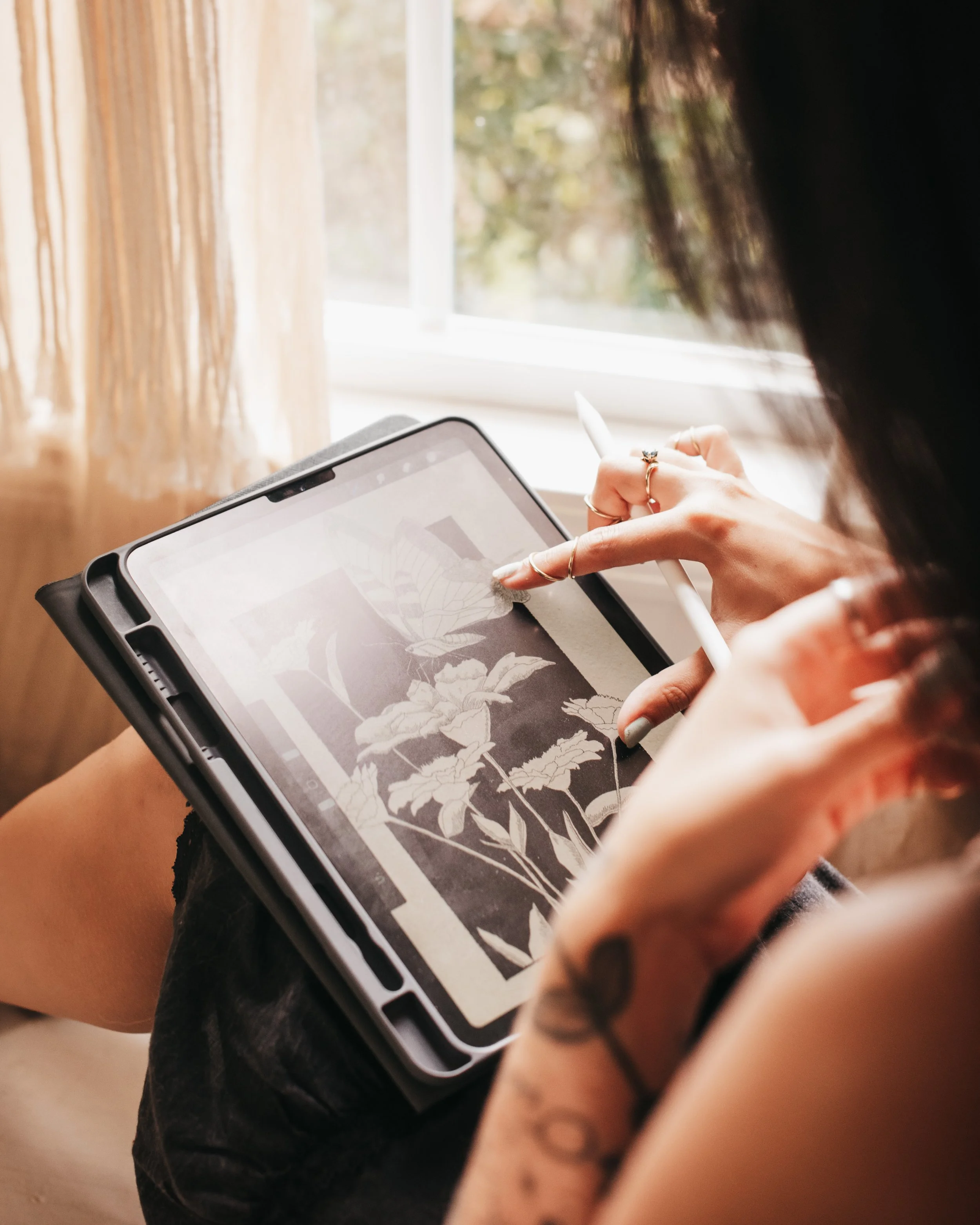How Creativity Became My Voice
I was 14 years old, sitting in Algebra class the first time I realized art could speak for me. I had written a poem in the blank spaces of my notebook where that day’s equations should’ve went, and I remember feeling something click: this is saying what I can’t. I hardly knew it at the time, but that moment was the beginning of a language that has followed me closely ever since.
Over the years, there have been so many “turning points” where words alone felt too small. Moments of grief, of frustration, of not knowing how to carry the heaviness of my body or my circumstances. Through writing and (eventually) collaging, art became the place I could take all of it—the sadness, the confusion, the overwhelm, and even the glimmers of hope—and give it form.
Colors, shadows, and vast spaces often convey what I can’t about the experience of being in my body. Poetry can do the very same thing. Sometimes I go in knowing exactly what I want to express. Other times, the process unfolds on its own, and only once the piece is finished can I recognize the emotions hidden inside it.
There’s something incredibly healing in that. I can pour everything into creating, and when it’s done, I don’t have to hold it as tightly anymore. The art says it all. It lets me release what I can’t always name, and in that release, I find a kind of relief I don’t find anywhere else.
It’s changed how I relate to myself, too. Instead of pushing feelings away, I can sit with them long enough to turn them into something tangible. And once they exist outside of me, I can step back and see them with more compassion than I could while they were only inside my head.
When words often fall short, art has become a powerful voice. It’s proof that I don’t have to define every experience in perfect sentences. I just have to give myself permission to create, and in that act alone, I find the truest expression of who I am.
